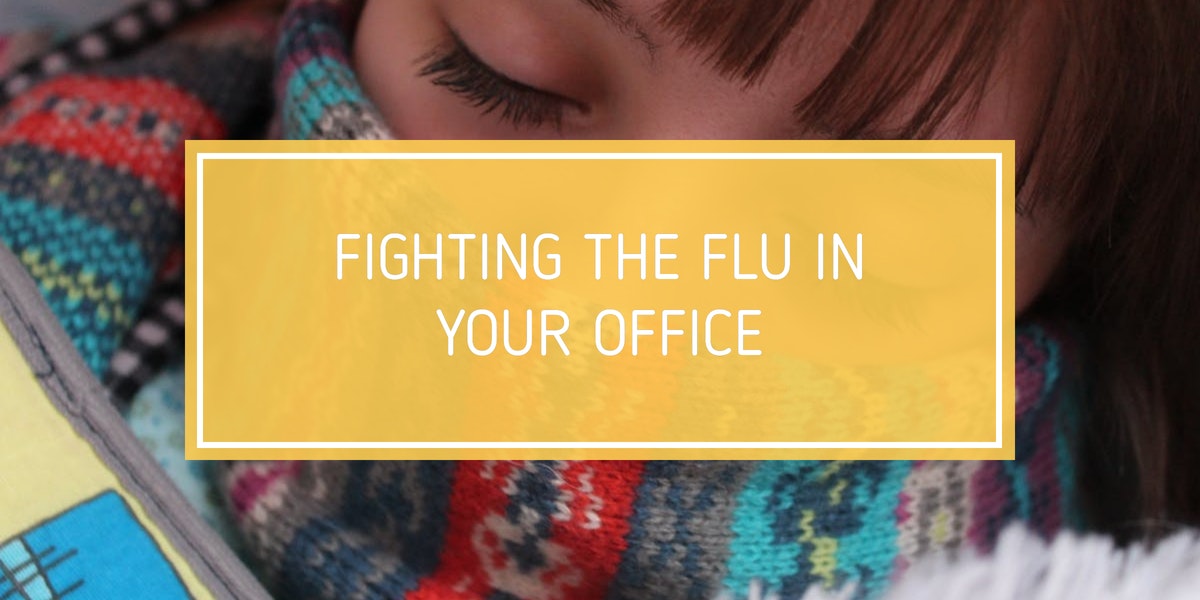As of this date, the U.S. Centers for Disease Control and Prevention (CDC) has reported that the influenza vaccine has proven 47% effective overall--61% for children up to the age of 17, but less than 25% for adults over 50.

Fighting the Flu With High-Performance Cleaning
While this year's flu season has been mild compared to last year, which resulted in an estimated 80,000 deaths, including 180 children, the effective rate of the influenza vaccine demonstrates that more must be done to prevent the spread and needless consequences of infection.
According to a recent article published by the ISSA;
As flu levels remain elevated nationwide, the U.S. Centers for Disease Control and Prevention (CDC) report this year’s vaccination is 47 percent effective overall against preventing influenza.
The vaccination has been most effective for youth, with a 61 percent effectiveness level for children up to age 17. However, just 24 percent of adults age 50 and over who received the shot were completely protected from the flu.
As of February 2, 28 children have died of flu-related complications. Last winter, an estimated 80,000 Americans, including 180 children, died of flu and its complications.
Flu Fighting Tips
High-performance cleaning methods focused on a clean for health first approach combined with proper hand-hygiene are the best methods for combatting the spread of the flu, outside of vaccination and isolation.
Additionally, training employees on proper office hygiene, such as cleaning up after themselves, how to properly wash their hands, identifying high-contact germ hot spots, and what to do if they fall ill have proven very effective in fending off the spread of influenza.
However, a commonly overlooked aspect of a healthy workspace, in regards to flu prevention, is dusting and vacuuming, which has a significant impact on the amount of dust in the air.
Elevated levels of dust contribute to poor indoor air quality and can lead to complications resulting in pneumonia, especially in vulnerable demographics--specifically unvaccinated children and adults over the age of 50.
The Complications With Dust
Dust is a big problem, especially in healthcare environments, and can lead to a host of infection control issues and prolonged recovery for patients.
Healthcare facilities can be compromised when dust is present in unseen spaces, which is why dust removal is paramount in all infection control programs.
While dust may appear innocuous, it could have significant health impacts.
Dusty surfaces have been shown to be a cause of hospital-acquired infections.
Those with a weakened immune system have a higher likelihood of acquiring an infection, making healthcare facilities even more sensitive and at risk.
The inhalation of dust or chemical cleaning products can also lead to aspirational pneumonia, especially in those with compromised immune systems.
According to Everyday Health;
[Aspirational pneumonia] can develop after a person inhales food, liquid, gases, or dust.
A form of aspiration pneumonia, chemical- or toxin-related pneumonia is caused by the inhalation of chemical fumes, as through exposure to a mix of ammonia and bleach, or in the breathing in of kerosene or some other noxious chemical.
This causes inflammation without bacterial infection.
This pneumonia can sometimes be difficult to treat, especially because the patients are sicker to begin with.
Once your lungs have been irritated by breathing in food or stomach contents, a bacterial infection can develop.
References & Resources
- Interim Estimates of 2018–19 Seasonal Influenza Vaccine Effectiveness — United States, February 2019
- Five Tips To Flu Prevention
- Pneumonia
Takeaway
Influenza is a cyclical challenge that plagues schools and businesses alike.
Numerous hurdles exist in preventing its spread, including:
- Vaccinations - Vaccines remain the single best method for prevention. However, challenges remain with adoption rates and efficacy, year-to-year, depending on the emergence of more deadly strains, such as the H3N2 variation that dominated the 2017-18 season.
- Psychological - Coming to work sick due to self-identification with one's work.
- Workplace Environment - A lack of available sick days, and;
- Personal Hygiene - Failing to properly clean up after oneself or follow handwashing guidelines.
However, of all of these hurdles, one challenge that can be directly addressed and systematically controlled is cleaning for health, an approach that should focus on:
- The use of certified green products to reduce the probability of contributing to low quality indoor air and the potential for aspirational pneumonia in infected occupants.
- A heavy focus on dust removal and HEPA filtration, and;
- Routine sanitization wipe downs of high-contact germ hot spots.
If you would like to learn more about the advantages of outsourcing your organizations to a high-performance custodial team focused on cleaning for health first--contact us today for a free quote!
In Bakersfield CA, call (661) 437-3253
In Fresno CA, call (559) 206-1059
In Valencia CA, or Santa Clarita CA, call (661) 437-3253

